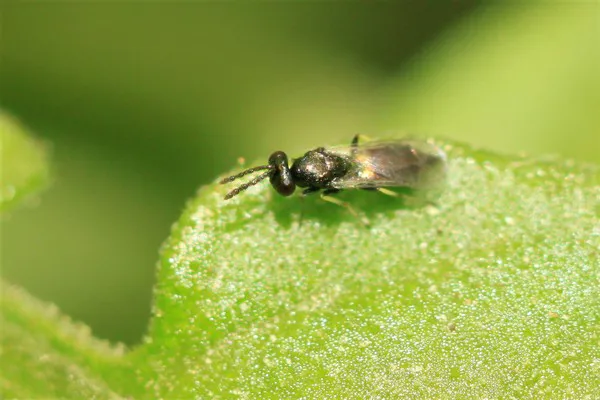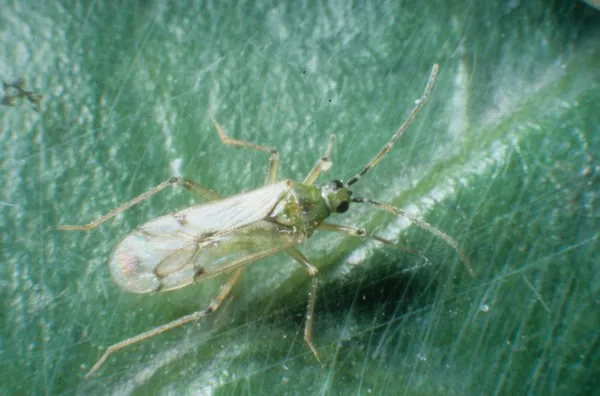Ecologists study how populations are regulated, while scientists studying biological pest control apply population regulation processes to reduce numbers of harmful organisms: an organism (a natural enemy) is used to reduce the population density of another organism (a pest).
Finding an effective biological control agent among the tens to hundreds of natural enemies of a pest is a difficult task. A large international research team led by professor Joop van Lenteren (Wageningen University) designed a two-step procedure to speed up the discovery of promising new natural enemies. During the first step, a set of evaluation criteria is used for a first selection to remove clearly ineffective or risky species from the list of candidates. Using these criteria resulted in removing 180 of the 200 known natural enemies of the South American tomato moth Tuta absoluta from the list of potential biocontrol agent candidates.
 Neceremnus tutae, parasitoid of Tuta absoluta (photo Jan van der Blom)
Neceremnus tutae, parasitoid of Tuta absoluta (photo Jan van der Blom)
 Nesidiocoris tenuis, predator of Tuta absoluta (photo Koppert Biological Systems)
Nesidiocoris tenuis, predator of Tuta absoluta (photo Koppert Biological Systems)
During the second step, an aggregate evaluation criterion, the pest kill rate, is applied to compare the pest reduction power of species not eliminated during the first step. The pest kill rate is the average daily lifetime killing of the pest by a natural enemy. Pest kill rates of six species of predators and seven species of parasitoids of Tuta absoluta were calculated and compared.
Several natural enemies had pest kill rates that were too low to be able to reduce the pest population below crop-damaging densities. Only a handful of species showed a high pest reduction capacity and their potential for a practical application can now be tested under commercial crop production conditions.
Read the complete research article at www.researchgate.net.
van Lenteren, J.C., Lanzoni, A., Hemerik, L., Bueno, V.H.P., Bajonero Cuervo, J.G., Biondi, A., Burgio, G., Calvo, F.J., de Jong, P.W., López, S.N., Luna, M.G., Montes, F.C., Nieves, E.L., Aigbedion-Atalor, P.O., Riquelme Virgala, M.B., Sanchez, N.E., Urbaneja, A. 2021. The pest kill rate of thirteen natural enemies as aggregate evaluation criterion of their biological control potential of Tuta absoluta. Scientific Reports (2021) 11:10756; https://doi.org/10.1038/s41598-021-90034-8
 For more information:
For more information:
Wageningen University & Research
joop.vanlenteren@wur.nl
www.wur.nl
